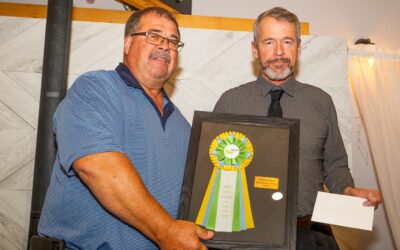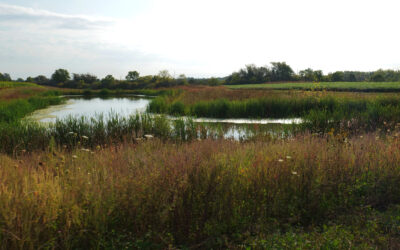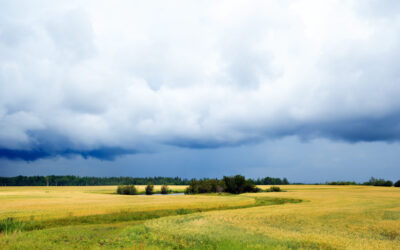With a family legacy of over 110 years, the Vergouwens continue to steward the land and water just as those who came before them did.
For over 110 years, the Scheer-Vergouwen family has stewarded their land and the animals they raise on it outside of Strathmore, Alberta.
Beth and Rod Vergouwen, along with their son Jack, daughter Jenna, and son-in-law Gradon, maintain over 600 head of cow-calf pairs and yearlings on Valley View Ranch. In its fifth generation, the Vergouwen’s brought Valley View Ranch to the ALUS program in 2019 because they wanted to help protect the wetland on their land and increase the grazing management of their herd.
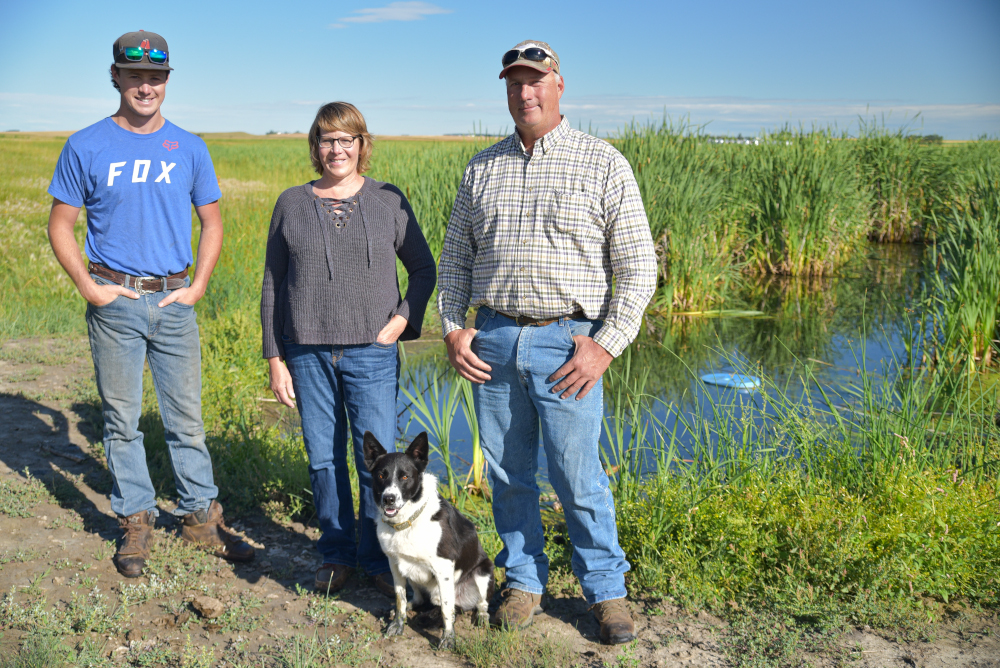
Jack, Beth and Rod (Jet the dog) stand in front of the wetland project they undertook with ALUS Wheatland.
The offsite watering component of the ALUS project tied into existing electric fencing on the ranch, which greatly increased management strategies. By reducing the impact the cattle have on the wetland’s health and how it functions as a part of the environment, the Vergouwen’s are helping to improve the health of the vegetation on their land, contributing to waterfowl habitat, and helping improve water quality in the Crowfoot Creek Watershed.
“We’re constantly looking for ways to better manage our wetland and grazing lands,” said the Vergouwens. “Offsite watering improves the health of our cattle, increases weight gain, improves soil, water and forage quality, and that’s important to us.”
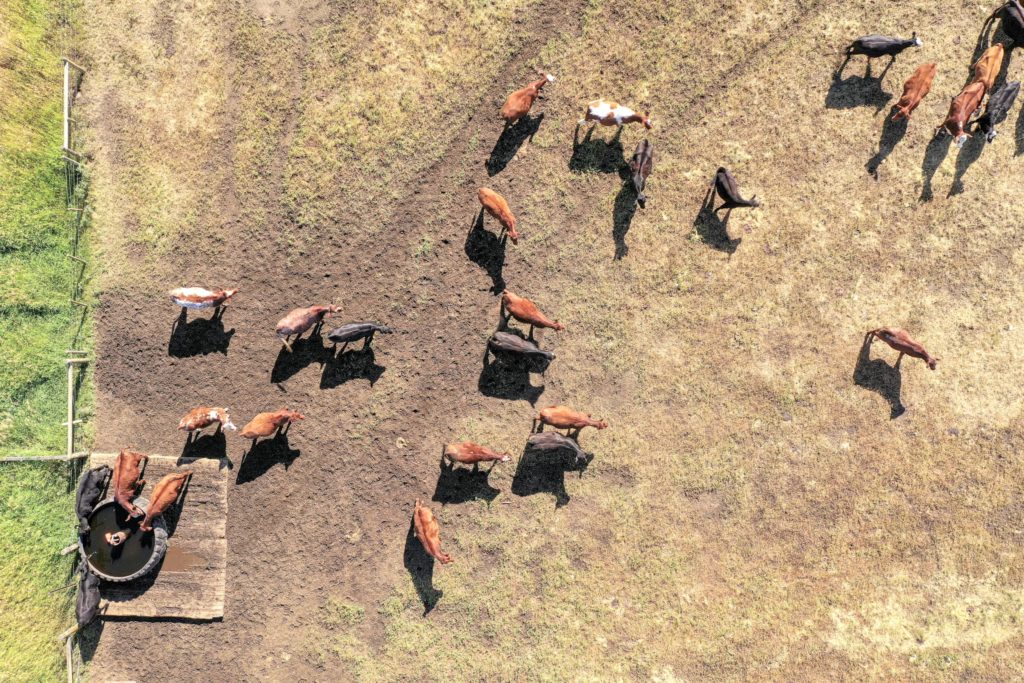
An overhead view of some of the 600 Angus cross yearlings at Valley View Ranch.
Over the course of their time running Valley View Ranch, Beth and Rod have committed to many programs and projects to help improve the health of their animals and their land. As Vice Chair of the Foothills Forage and Grazing Association, Rod helps other ranchers improve the effectiveness of foraging practices on the land to ensure long-term soil health and profitable outcomes.
The Vergouwens also maintain an environmental farm plan, are certified by the Verified Beef Production Plus program and have undertaken thistle management projects that utilize grazing and control.
Their ALUS project is, evidently, an evolution of a family legacy of pride in the land and in the work they do on the land. And its impacts extend beyond the borders of their ranch. With their ALUS project alone, the Vergouwens contribute to cleaner water, improved habitat, more biodiversity and flood and drought resilience for their entire community.
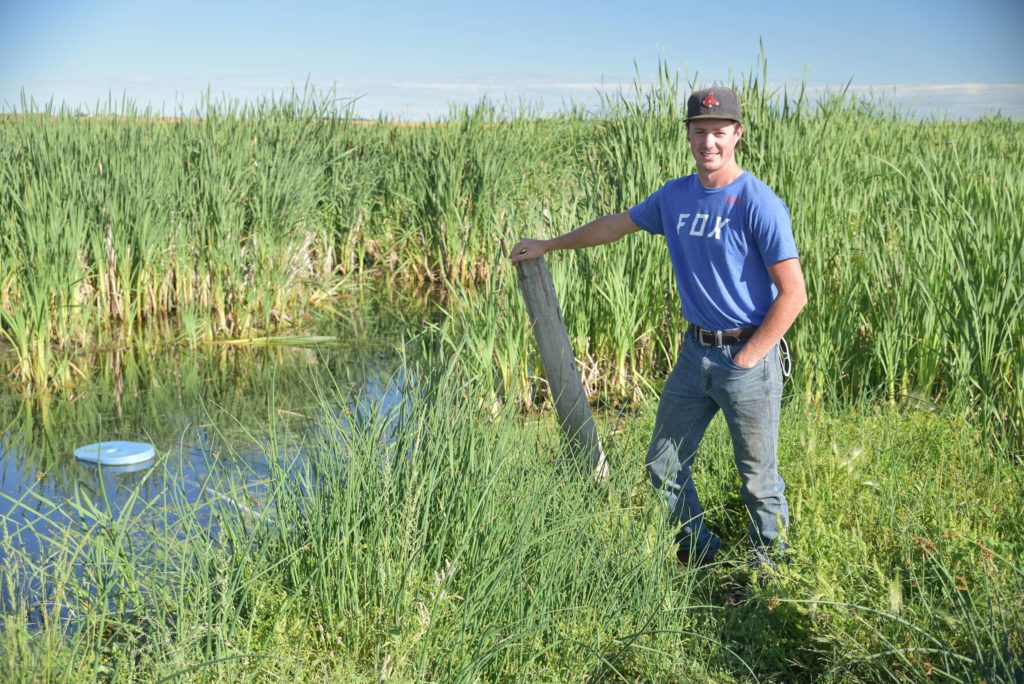
Jack Vergouwen stands in front of his family’s ALUS wetland protection project.
“We know it’s important to think about the generational health of our water resources on this land,” said the Vergouwens. “As fifth-generation ranchers, we want to pass the land on to the next generation as healthy as it was when Beth’s great grandfather homesteaded and began to work it in 1909.”
Since the early 1900’s, the ranch has operated under the brand Valley View Ranch, and it’s evident that the brand holds true today as much as it did when it first took flight from the Alberta prairie. In addition to managing the ranch they also direct market grass finished beef and lamb. Check out their work at flyingheart.ca.
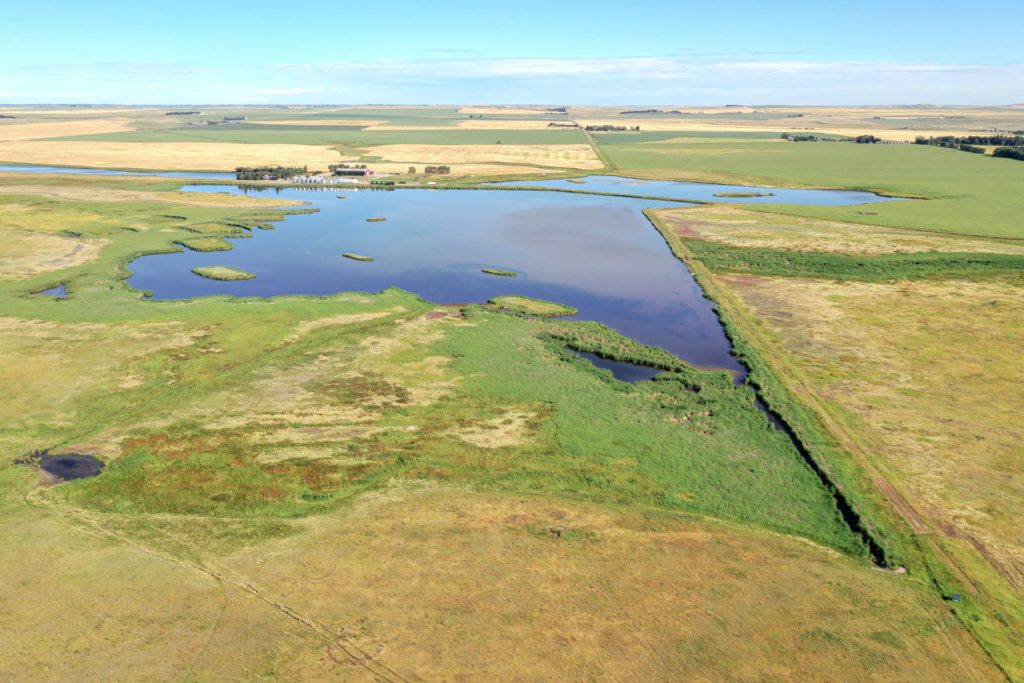
Gorgeous waterbodies that are part of Valley View Ranch, as seen from above.
ALUS Wheatland is one of five ALUS communities supported by the Intact Foundation’s Adaptation Action Grants, building a more resilient Canada.

